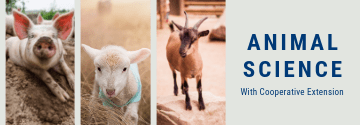Planning for the growing season this year has been a little different than in previous years. The winter season seemed to be longer than usual and has producers wondering when they would be able to access their fields. Here is a bit of information for those producers that are considering planting alfalfa this year.
Field Selection
Establishment of alfalfa seed require a well-drained soil for optimum production. A germination soil temperature of 45oF is adequate for alfalfa establishment. Achieving a profitable stand of alfalfa is the result of proper field selection utilizing proven production practices to ensure germination and establishment. Poor soil drainage can cause problems with soil crusting which may cause poor soil aeration, micronutrient toxicity, and ice damage during winter.
Soil Fertility
It is important to remember to ALWAYS take soil samples before planting to determine pH and nutrient status of the field. Overall, there are 18 nutrients (macronutrients and micronutrients) essential for alfalfa growth. Some of these nutrients include:
- Phosphorus: Helps root growth and increase seeding success. Low fertility soils can be improved with an application of 30-50 lbs per acre of P2O5, depending on soil test results.
- Potassium: Research suggests that potassium has little effect or influence on improving stand establishment, however, adequate potassium should be added to meet the needs of alfalfa and even a companion crop.
Planting Alfalfa
Failure to successfully establish alfalfa can be expensive and may lead to issues related to production soil erosion. Some considerations for planting alfalfa include: (1) seedbed preparation; (2) seeding dates; (3) seeding depth and rate; (4) whether or not to seed with a companion crop; (5) 100% alfalfa seedings vs. alfalfa-grass mixtures.
- Seedbed preparation
Having a firm seedbed is a critical step to ensure good germination of alfalfa seed. Firm seedbeds will reduce the possibility of planting too deep and will help hold moisture closer to the surface. Packing the soil will help to insure a firm seedbed and good soil moisture retention. - Seeding dates
Determining when to plant alfalfa depends on several factors such as soil moisture and cropping practices. For best results in South Dakota alfalfa should be seeded between mid-April to mid-May. This all depends on weather conditions as well. This year might be safe to say that seeding alfalfa in mid-May might be the best option for producers. - Seeding depth and rate
Seed should be covered with enough soil to provide moist conditions for germination. Seed placement of ¼ to ½ inch deep is appropriate on most soils at rates from 10 to 25 lb seed/acre. - Seeding with or without a companion crop
Seeding alfalfa with a companion crop such as annual ryegrass, oats, spring barley, or spring triticale can help to minimize weed competition during establishment. However, planting alfalfa without a companion crop allows producers to harvest more alfalfa with higher quality in the seeding year. - 100% alfalfa seedings vs. alfalfa-grass mixtures
Pure stands of alfalfa will produce the highest quality forage and for that reason has the highest demand from the dairy industry. Other producers whose animals’ nutrient requirements are lower may be interested in using alfalfa/grass blends to take advantage of improved persistency while still meeting the nutrient requirements of their livestock. Alfalfa-grass mixtures also offers some advantages such as reduced weed pressure and soil erosion.
The Bottom Line
It is always handy to remember that the first harvest seeding year is when alfalfa is seeded in the spring and considerations of taking one or two cuttings in the same year need to be made by then. The first harvest should be done after the flowers begin to appear, allowing greater energy reserves in the roots. Generally, alfalfa will reach this stage of development 60 to 70 days after emergence. Harvesting delays during this stage will cause large reductions in quality and a decline in total yield over the season because fewer harvests are possible.
I hope this growing season is another successful one. We might be a little slow this year; but that does not mean we won’t be able to achieve the goals for production.


